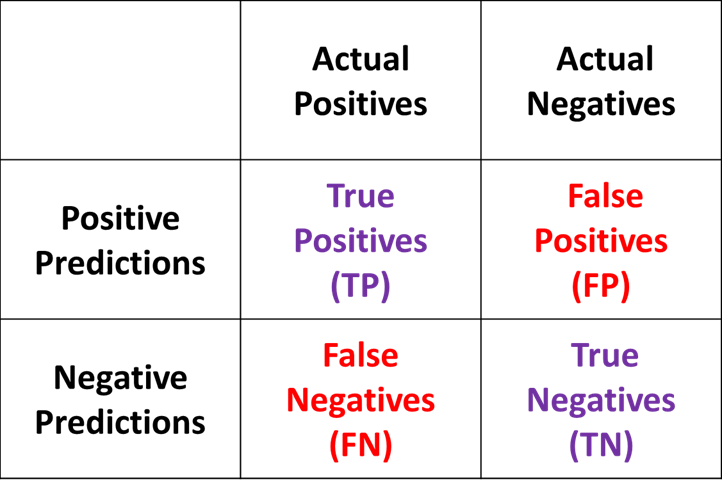Applications of metric evaluation
Predicting CTR with Machine Learning in Python

Kevin Huo
Instructor
Four categories of outcomes

- First part of category (true/false) represents whether model was correct or not
- Second part of the category (positive/negative) represents the target label the model applied
Interpretations of four categories
- If model predicts there is a click, then there is a bid for that impression which costs money
- If no click predicted, no bidding and hence no cost
- True positives (TP): money gained (impressions paid for that were clicked on).
- False positives (FP): money lost (impressions that were paid for, but not clicked).
- True negatives (TN): money saved (no click predicted so no impressions bought).
- False negatives (FN): money lost out on (no click predicted, but would have been actual click in reality).
Confusion matrix
print(confusion_matrix(y_test, y_pred))
[[8163 166]
[1517 154]]
# Order: tn, fp, fn, tp
print(confusion_matrix(y_test, y_pred).ravel())
[8163, 166, 1517, 154]
ROI analysis
- Assume: some cost
cand returnrper X number of impressions
total_return = tp * r
total_cost = (tp + fp) * c
tp * r > (tp + fp) * c
roi = total_return / total_spent
Let's practice!
Predicting CTR with Machine Learning in Python

